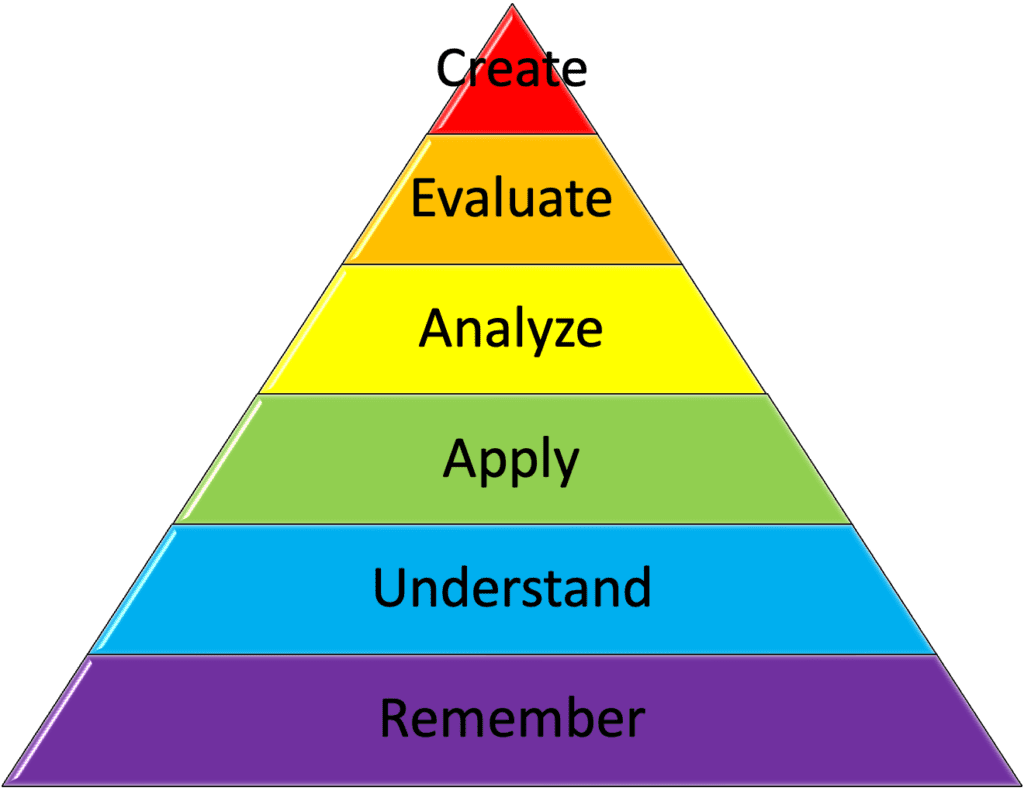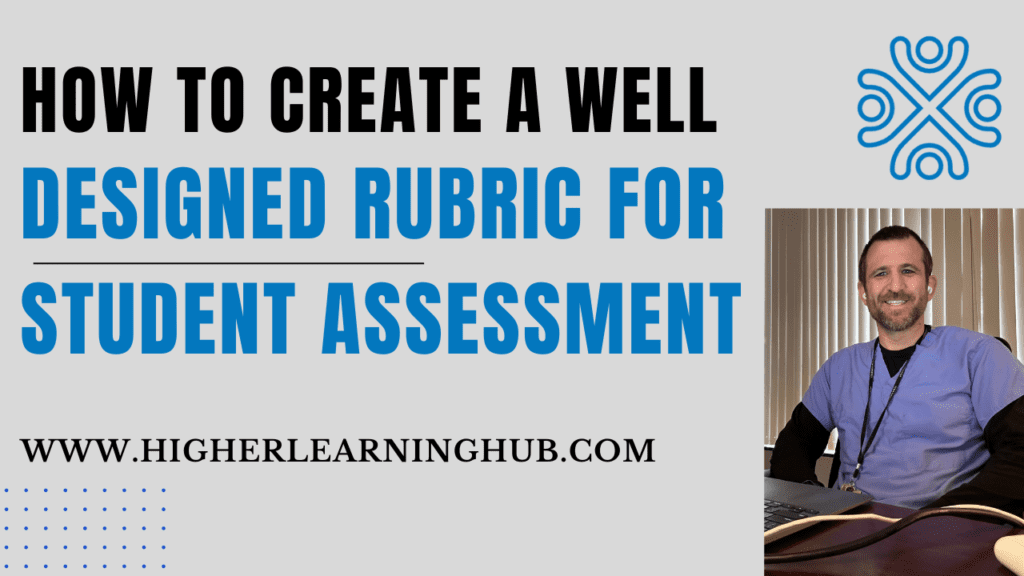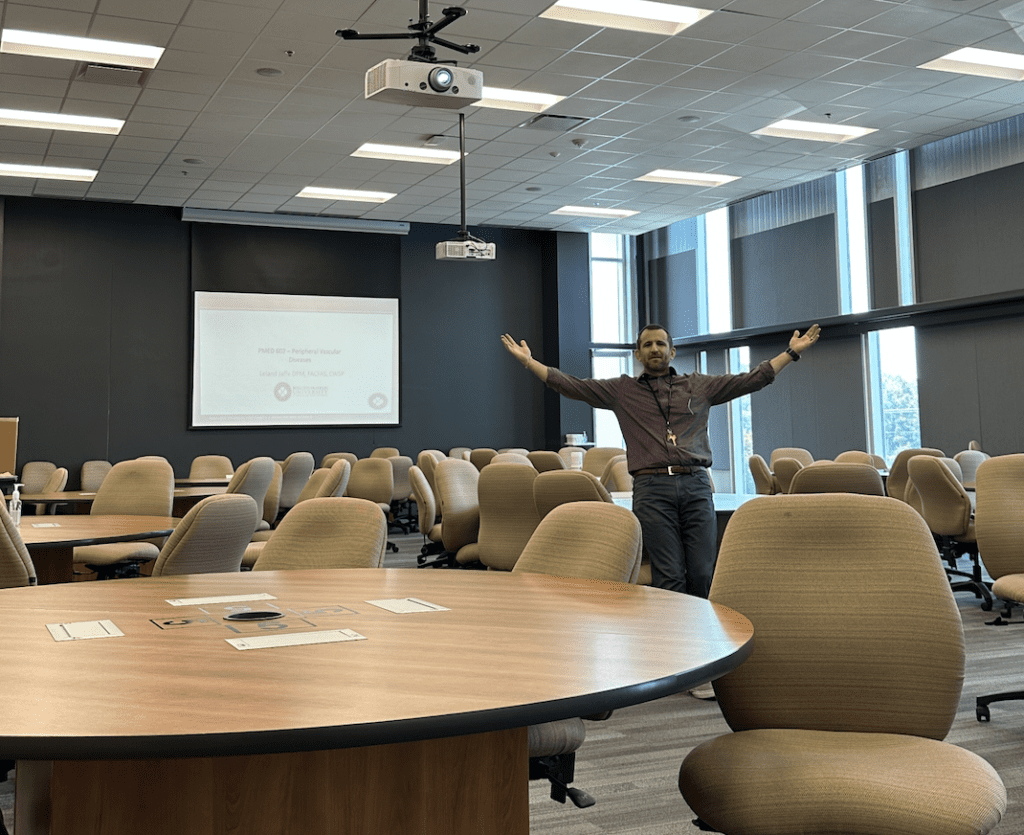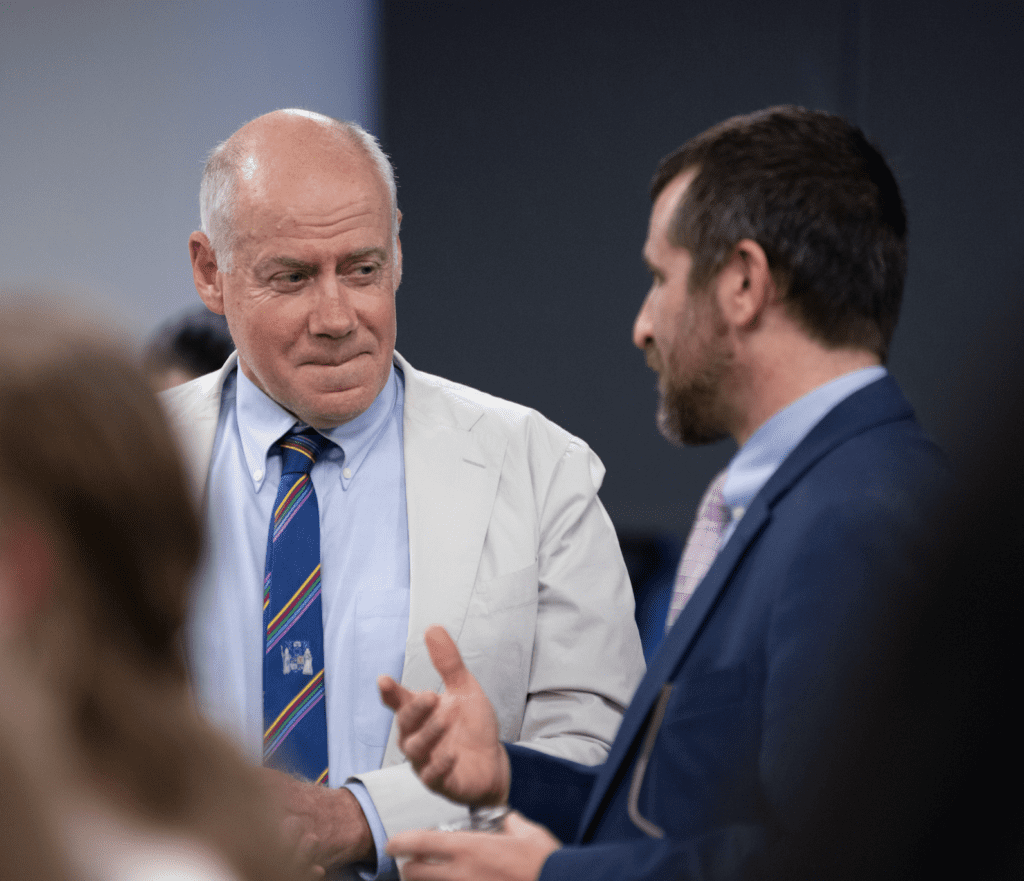Authored by Dr. Leland Jaffe; Associate Dean and Professor; Published on September 9th, 2024
In the demanding environment of higher education, educators often face a barrage of requests from students, colleagues, and administration. It’s critical, yet challenging, to set boundaries that protect your time and energy.
As an educator, learning to say “no” with confidence isn’t just beneficial—it’s essential to maintain your well-being and effectiveness. This guide will arm you with strategies to assert your priorities without guilt, helping you manage your workload and prevent burnout. You’ll discover practical tips on balancing professional responsibilities and personal needs, ensuring you can give your best to your students and yourself.
Understanding the Importance of Saying “No”


Saying “no” isn’t just about refusal; it’s about prioritizing your well-being and maintaining a sustainable workload in higher education. For educators, understanding the necessity of this simple word can make a significant difference in both personal and professional arenas. It helps to create a balance that fosters a healthy environment not only for themselves but also for the students they teach. Let’s explore why saying no is vital.
The Impact of Overcommitment
Taking on too many responsibilities is like trying to juggle with one too many balls. Eventually, something is going to drop. In the academic world, overcommitment can lead to stress, burnout, and a decline in job performance. Educators often feel the pressure to say yes to every opportunity, whether it’s meeting with students, joining committees, or engaging in professional development. However, consistently doing so can result in:
- Increased stress and anxiety, leading to mental health issues.
- Reduced effectiveness in teaching and fulfilling other obligations.
- Decreased satisfaction with their career and personal life.
By understanding the power of saying no, educators can protect their time and energy, focusing on what truly matters.
Establishing Professional Boundaries
Professional boundaries act as a protective barrier against overwork, allowing educators to maintain a healthy work-life balance. These boundaries are not just lines drawn in the sand; they are crucial standards that define one’s limits and protect against burnout. When educators establish clear boundaries, they can:
- Allocate Time Properly: Ensuring enough time for personal activities, family, and self-care.
- Maintain Energy Levels: Preventing exhaustion by not stretching themselves too thin.
- Foster Better Relationships: Having time for meaningful interactions with students and peers.
Setting boundaries is not only beneficial for mental health but also enhances productivity and satisfaction. As discussed in this article, saying no is a skill that supports authenticity and focus.
By focusing on saying no strategically, educators equip themselves with the ability to nurture both personal well-being and professional excellence.
Common Situations Where Educators Need to Say “No”
Educators face a variety of demands from their universities, colleagues, and students. While it’s tempting to accommodate every request, sometimes saying “no” is necessary to maintain a healthy work-life balance and ensure quality in what’s already on their plate. Here are some common scenarios where educators might need to decline additional responsibilities.
Committee Responsibilities
University committees play vital roles in shaping policies and academic programs, but they often demand significant time and effort. Navigating requests to join additional committees requires a strategic approach:
- Assess Your Current Workload: Before agreeing, consider your current responsibilities and commitments. Are you already stretched thin? If so, it might be wise to decline.
- Be Transparent: Clearly communicate your reasons for declining. You could say, “I’m currently focusing on projects where my strengths are most needed.”
- Offer Alternatives: Suggest another colleague who might be a good fit, or propose participating in the committee in a less demanding capacity.
For further insights, check out this article on saying no gracefully in academia.
Extra Teaching Responsibilities


Balancing course loads with personal time is crucial for effective teaching. Here’s how to handle requests for extra classes or tutoring without straining relationships:
- Prioritize Quality Over Quantity: Explain that taking on more would dilute the quality of your current commitments. Share that your priority is maintaining the highest standards for your students.
- Set Clear Boundaries: Let others know your limits ahead of time. By setting expectations, you’re less likely to be seen as uncooperative when you say no.
- Suggest Alternatives: If possible, direct the requester to resources or other instructors who may have capacity.
To read more about setting boundaries in academic settings, you might find this resource helpful.
Social Commitments
Academic life isn’t all about teaching and research. Social events, such as department dinners and networking functions, often crowd educators’ calendars. Here’s how to manage social expectations:
- Consider Your Objectives: Decide if attending the event aligns with your goals. Is it beneficial for your career progression or work relationships?
- Communicate Clearly: Politely decline by saying, “Thank you for the invitation, but I can’t commit at this time due to other obligations.”
- Balance Participation: Attend events that hold the most value to you or where your absence would be most noticed.
By managing these commitments carefully, educators can focus on what truly matters in their roles and personal lives. Reflecting on tools for saying no in academia may provide further guidance on maintaining balance.
Strategies for Saying No Effectively
Being an educator in higher education often means juggling multiple responsibilities. One of the biggest challenges is learning to say no. Whether it’s to students requesting deadline extensions, colleagues asking for a favor, or administrative duties piling up, saying no is crucial for maintaining your well-being. This section explores strategies that educators can use to say no effectively, helping you reclaim time and reduce stress.
Using Clear Communication
When it comes to saying no, clear communication is key. Being direct yet respectful can help prevent misunderstandings and maintain positive relationships. Here are some tips:
- Be Honest: Clearly state why you can’t fulfill the request. Honesty builds trust.
- Stay Respectful: Use polite language. A well-worded rejection can soften the blow.
- Keep it Simple: Avoid over-explaining. A simple “I can’t take on more projects right now” is often enough.
Using clear and respectful communication not only makes your refusal more palatable but also upholds your integrity. As stated by the National Center for Biotechnology Information, learning to say no is a powerful tool for maintaining integrity in academia.
Offering Alternatives
Saying no doesn’t have to mean closing the door completely. Offering alternatives can be a constructive way to navigate refusals. Consider these approaches:
- Suggest Other Resources: Direct them to other people or resources that might assist them.
- Propose Different Ideas: Offer a different time or method to fulfill the request if possible.
- Use Conditional Responses: Say no for now, but leave room for future possibilities.
Proposing alternatives shows that you care about the other person’s needs and are willing to help in other ways. This approach can be particularly useful in maintaining relationships and collaborations, as discussed in Inside Higher Ed.
Practicing Assertiveness
Assertiveness is a critical skill for educators, empowering them to say no with confidence and without guilt. Here are some techniques:
- Practice Saying No: Rehearse your response in low-pressure situations to build confidence.
- Set Boundaries: Knowing your limits makes it easier to make decisions without hesitation.
- Use Confident Body Language: Stand tall and make eye contact to reinforce your words.
Developing assertiveness can transform how you respond to requests. By practicing assertiveness, you cultivate a sense of empowerment and confidence, allowing you to protect your time and energy. As highlighted in HigherEd Jobs, assertiveness is an art that, once mastered, can significantly ease the pressure of continuous demands.
These strategies don’t just help you say no but do so in a way that respects both your needs and those of others. The balance of clear communication, offering alternatives, and practicing assertiveness will empower you to manage your workload more effectively.
Overcoming Guilt and Pressure
In the dynamic environment of higher education, saying no can often feel like an uphill battle. Educators find themselves juggling responsibilities, often at the expense of their well-being. Recognizing and overcoming the feelings of guilt and pressure associated with saying no is crucial to maintaining a healthy work-life balance. Let’s explore how educators can identify guilt triggers and build confidence in their decision-making.
Recognizing Guilt Triggers
Educators frequently face guilt when they decline a request, but why does this happen? Understanding the triggers that ignite these feelings is the first step toward overcoming them. Here are common guilt triggers educators might encounter:
- Fear of Letting Down Others: This is a big one for me… Many educators worry that saying no might disappoint colleagues or students, impacting their relationships and professional reputation.
- Perfectionism: The desire to meet every expectation and accomplish every task flawlessly can lead to overwhelming guilt when declining additional responsibilities.
- Professional Expectations: The pressure to adhere to the unwritten code of always striving for more can make refusal seem like a career risk.
Addressing these triggers requires a mindset shift. By acknowledging that it’s impossible to fulfill every request and prioritizing personal well-being, educators can begin to see saying no as a necessary and healthy choice. For further insights, consider reading how academics struggle with guilt.
Building Confidence
The art of saying no with assurance comes from building self-confidence. When educators trust their judgment, they can decline requests without remorse. Here are some tips to bolster confidence:
- Know Your Limits: Understanding personal and professional boundaries is key. Clearly defined limits can empower educators to say no without second-guessing.
- Practice Assertiveness: Practicing firm but polite responses can make it easier to refuse requests. Role-playing scenarios with a trusted colleague can be a helpful exercise.
- Reflect on Past Experiences: Looking back at instances where taking on too much led to stress can reinforce the importance of setting boundaries.
- Educate Yourself: Learning about the psychology of guilt and pressure can provide valuable insights into overcoming these feelings.
- Seek Support: Engaging in conversations with supportive peers or mentors can provide new perspectives and encourage more confident decision-making.
Building confidence is not an overnight process, but with time and practice, educators can master the balance between professional obligations and personal well-being.
Fostering a Supportive Environment
Creating a supportive environment in higher education is essential for fostering collaboration and respect among educators. By promoting open discussions and modeling healthy behaviors, educators can encourage a culture of mutual respect and understanding. Here’s how educators can achieve this:
Encouraging Open Discussions
Discussing boundaries isn’t just a nice-to-have; it’s essential for a healthy educational team. Encouraging open conversations can lead to a more collaborative and supportive atmosphere. Imagine if everyone felt comfortable sharing their limits; conflicts could be minimized, and teamwork could flourish.
- Create Safe Spaces: Establish regular meetings where team members can freely express their concerns and boundaries without fear of judgment.
- Lead by Example: Educators should be the first to openly discuss their boundaries, setting a precedent for others to follow.
For further insights on fostering inclusive learning environments, consider exploring Fostering an Inclusive Learning Environment.
Modeling Healthy Behaviors
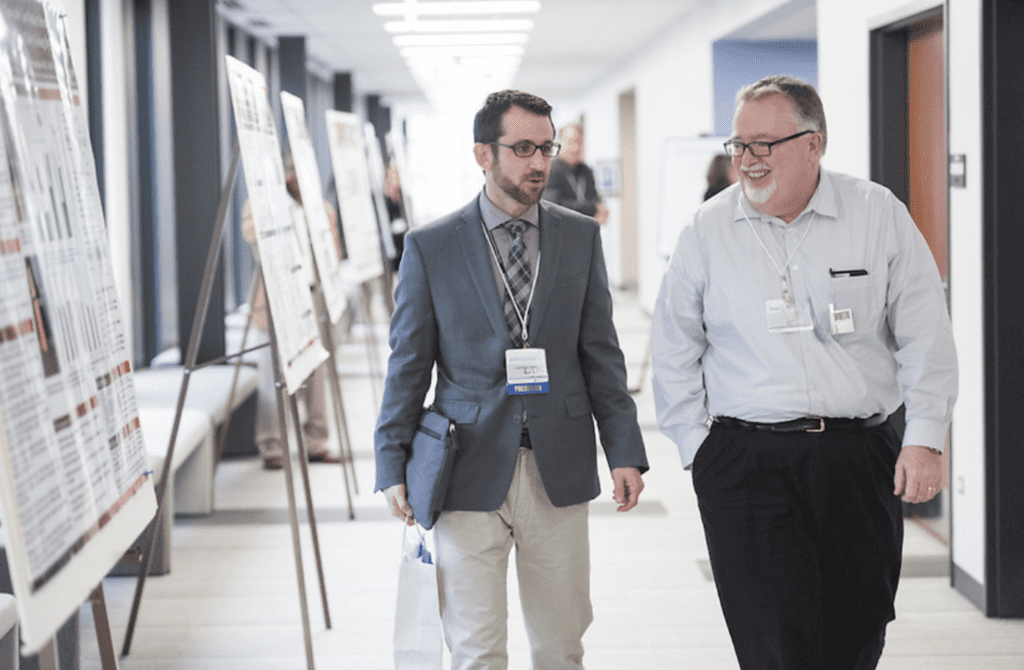

Educators play a pivotal role in setting examples for their students and peers. By modeling the art of saying no, they promote a balanced work-life approach. This not only benefits the educators themselves but also sends a powerful message to students about the importance of self-care and boundaries.
- Practice What You Preach: Show students and colleagues that it’s okay to say no by doing so yourself in appropriate situations.
- Communicate Clearly: When declining a request, provide a brief explanation of the reasons. This helps others understand that a no isn’t personal—it’s a necessary boundary.
To learn more about positive strategies for fostering supportive environments, you may find Shaping a Positive Learning Environment useful.
By fostering a supportive environment through open discussions and modeling healthy behaviors, educators can cultivate a culture that respects boundaries and nurtures mutual understanding.
Mastering Saying No In Higher Education – Conclusion
Saying no in higher education is vital for maintaining balance and sustaining both personal and institutional health. By setting boundaries and prioritizing tasks, educators can enhance their productivity and well-being. This empowers them to focus on what truly matters in their roles.
To make a real impact, educators should practice saying no with kindness and clarity, building a culture of open communication. This not only benefits their workload but also sets a positive example for students and colleagues.
Consider how saying no can fit into your professional life. How might your teaching and personal well-being improve with such boundaries?
Thank you for exploring these strategies. Share your thoughts and experiences on setting limits in your educational role. Your insights can contribute to a healthier academic environment.


